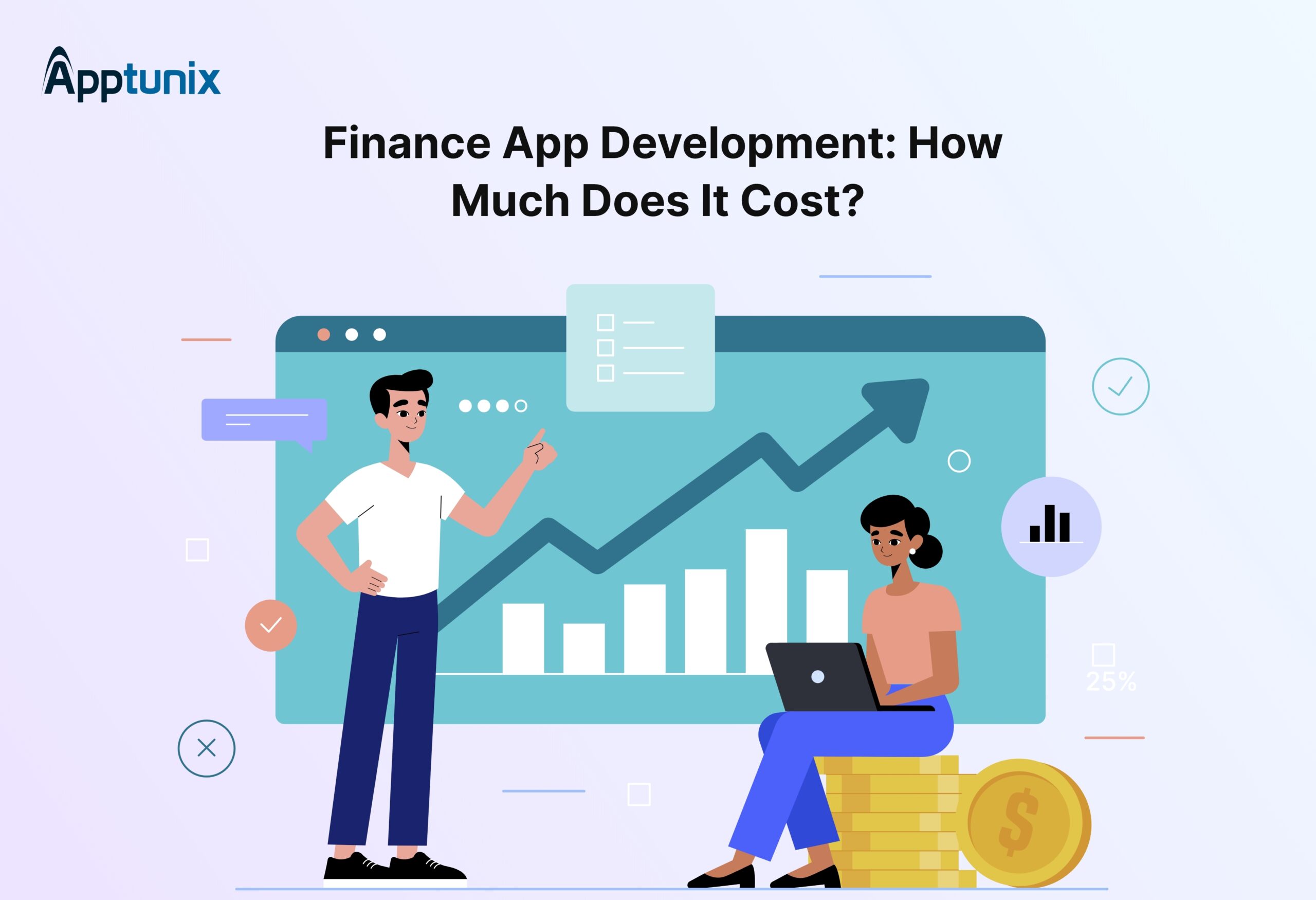Don't miss the chance to work with top 1% of developers.
Sign Up Now and Get FREE CTO-level Consultation.
Confused about your business model?
Request a FREE Business Plan.
Android App Development Technologies: How to Build an App for Android
Table of contents
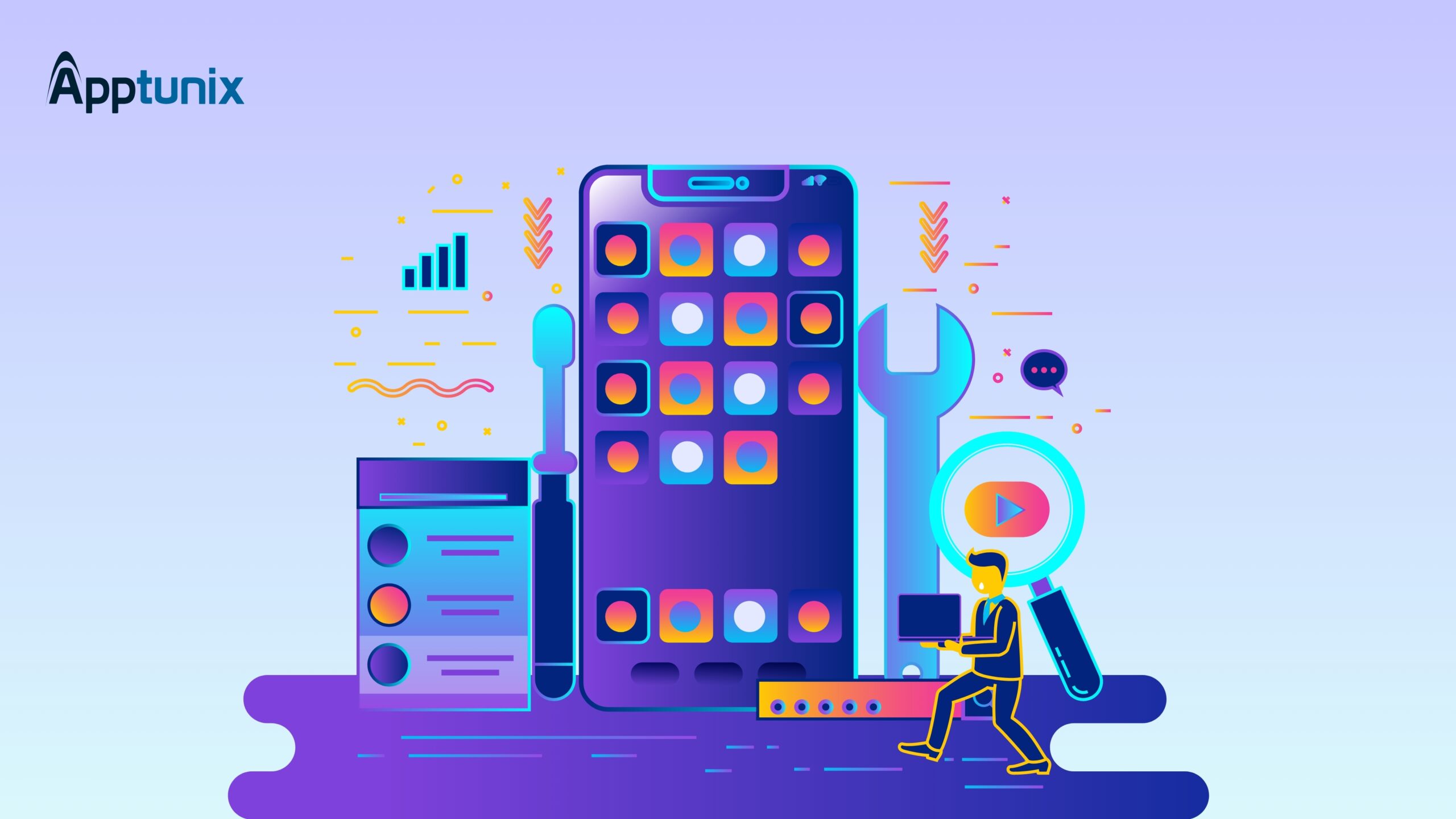
The Android Market App is a thriving ecosystem that provides access to a wide range of applications for Android devices. With a user base exceeding three billion, it offers a diverse selection of productivity, communication, gaming, and entertainment apps.
The Android operating system continues to assert its dominance in the global smartphone market, capturing an impressive 70% of all smartphone usage, as reported by StatCounter. Another report suggested, Google Play, the primary app store for Android, has experienced remarkable growth over the past decade, achieving a staggering revenue of $38.6 billion in 2020. With an extensive collection of apps available on the platform, users downloaded these apps a total of 108 billion times in 2020.
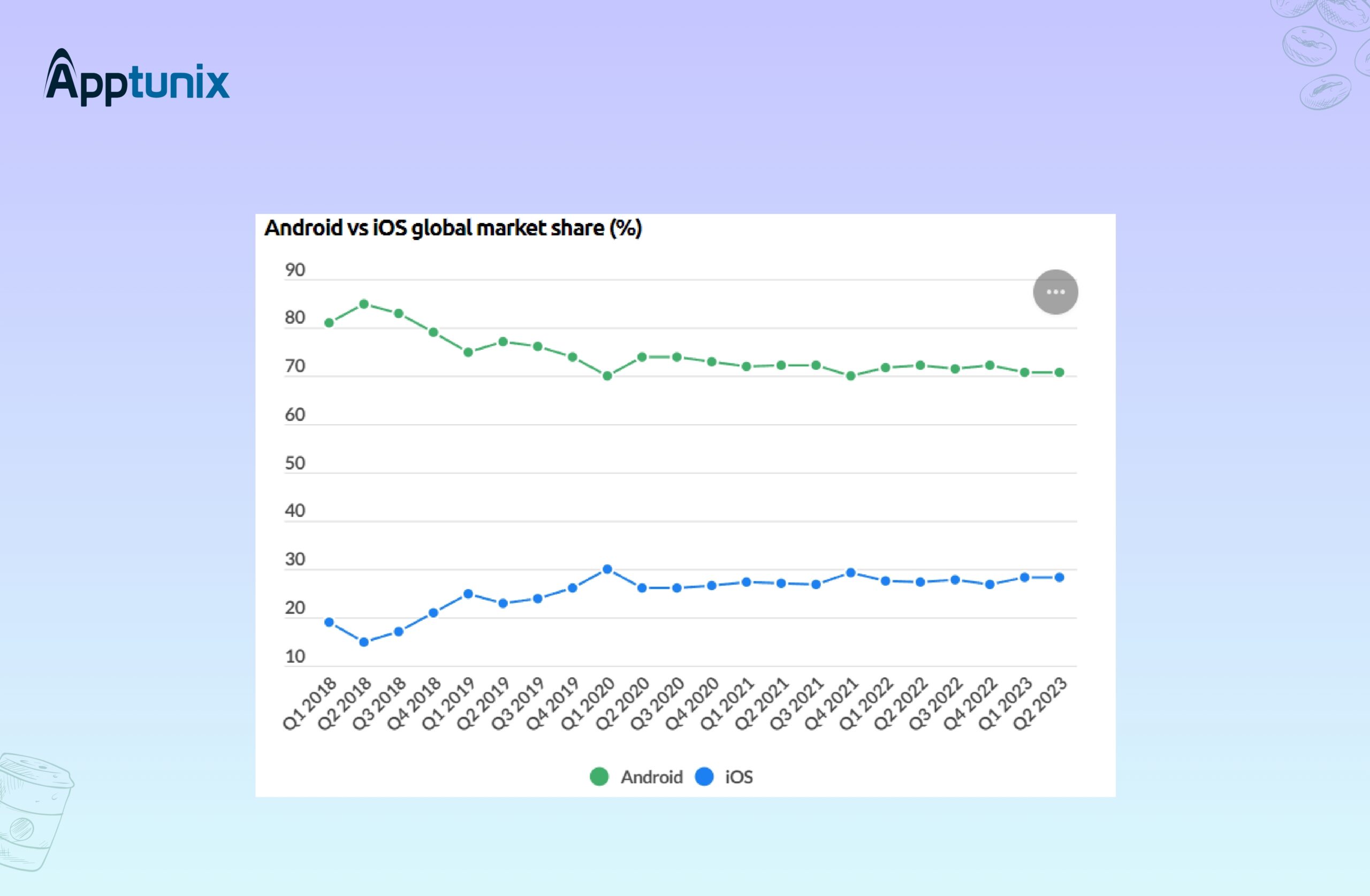
In this blog, we’ll initiate a search probe into the thoroughgoing impact of Android apps, and technologies used in Android app development company uncovering how they are transforming industries, empowering individuals, and fostering connectivity in ways that were once unimaginable.
How are Android Apps Revolutionizing Business Today?
In today’s digitally-driven landscape, Android applications have become an influential gateway to diverse audiences and immense prosperity. They outshine traditional websites and desktop software, elevating competitive advantage and driving robust returns on investment (ROI).
Android’s influence extends across numerous countries, becoming the leading platform in most regions worldwide. However, it faces stronger competition from Apple in Japan and the United States. On the other hand, countries such as Brazil, India, Indonesia, Iran, and Turkey have embraced Android wholeheartedly, with Android devices holding over 85 percent of the market share in these regions. This widespread adoption of Android further underscores the immense significance of the platform in shaping the mobile app landscape and its impact on global digital interactions.
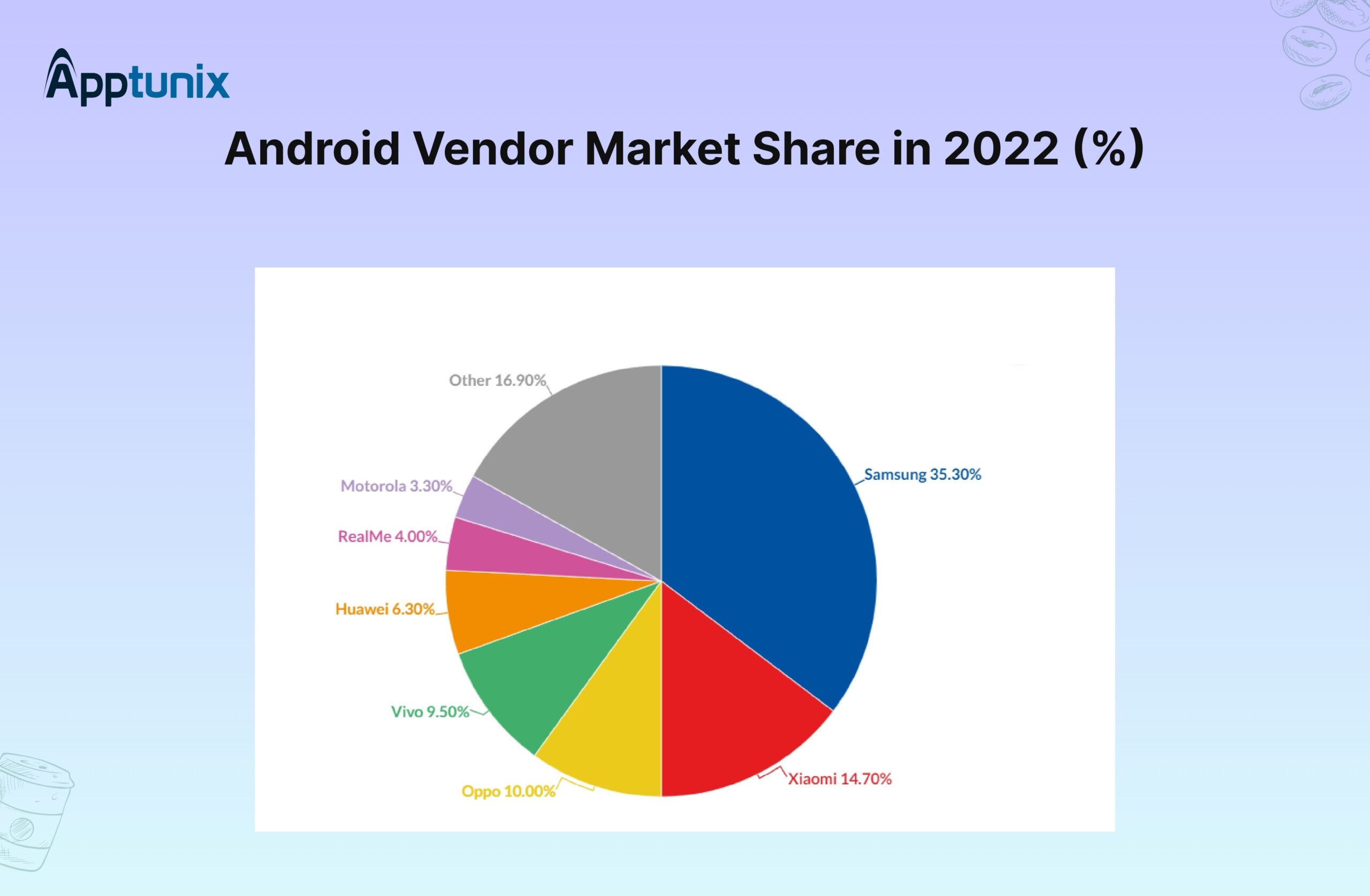
Moreover, the sophisticated and advanced smartphones preferred by adults significantly contribute to the booming revenue and business in the app market. As adults embrace these cutting-edge devices, the demand for innovative and feature-rich mobile applications surges, creating a lucrative opportunity for businesses to tap into this dynamic market and cater to the diverse needs of smartphone users
The impact of Android apps on both business and consumer realms is anomalous. An increasing number of individuals now rely solely on Android smartphones to access product information, compare options, and make online purchases. While the internet expanded brands’ global presence, mobile apps take it a step further, fundamentally reshaping business practices.

Now that you understand the importance of dynamic Android apps for empowering businesses to share information seamlessly, collaborating with partners and vendors, and engaging with customers worldwide. Let’s turn the ball around to glance at the technical side of this game-changing technology.
Top Five Programming Languages for Android App Development
When it comes to technologies used in Android app development, certain programming languages stand out for their efficiency and versatility in this arena. These languages offer robust capabilities, efficiency, and flexibility, making them the go-to choices for developers looking to create cutting-edge Android applications. Let’s delve into the top contenders that drive innovation in this dynamic field.
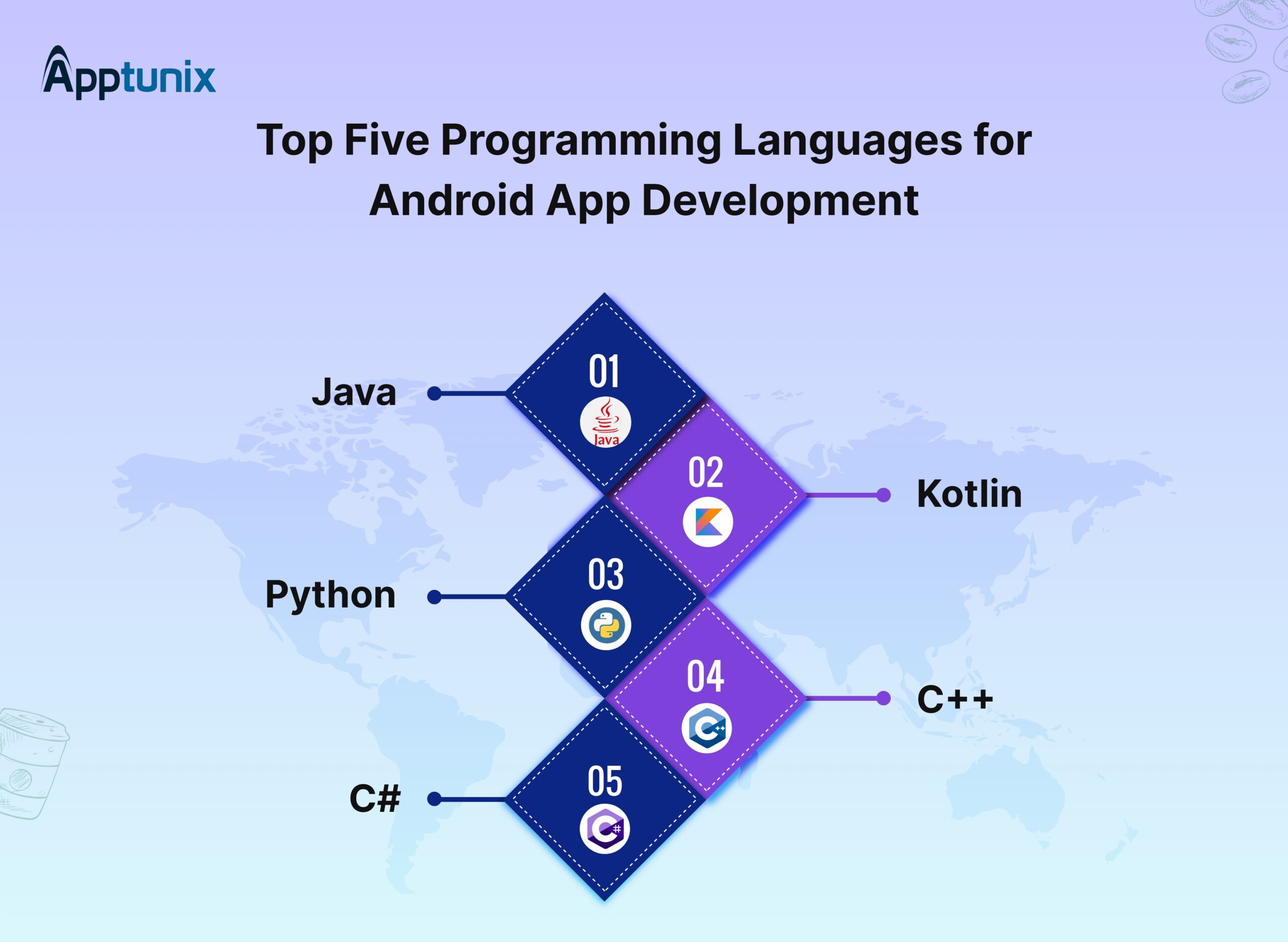
1. Java
Java stands as the foundational and most widely used language and one of the best technologies for Android application development. Renowned for its versatility and reliability, Java is the go-to language for Android app development, declared by Google. Its object-oriented nature facilitates code reusability and enables developers to create feature-rich, high-performance Android apps. As the most supported language for Android development, Java continues empowering developers to craft innovative and user-friendly mobile experiences.
Features
- Platform Independence: Write Once, Run Anywhere (WORA) capability for cross-platform compatibility.
- Object-Oriented: Supports code reusability and modular design through object-oriented principles.
- Multithreading: Enables concurrent programming for efficient and responsive applications.
2. Kotlin: As a modern and adaptable programming language, Kotlin has emerged as the official language for Android application development, endorsed by Google. With its concise syntax, null safety, and seamless interoperability with Java, Kotlin simplifies coding and enhances developer productivity. Offering enhanced safety and readability, Kotlin has rapidly gained popularity among Android developers, empowering them to build robust, efficient, and feature-packed applications for the ever-evolving mobile landscape.
Features
- Smart Type Inference: Kotlin’s type inference feature automatically deduces variable types, reducing the need for explicit type declarations.
- Coroutines: It supports lightweight concurrency with coroutines, enabling asynchronous and non-blocking programming.
- Extension Functions: It allows developers to extend existing classes with new functionalities, promoting code modularity and reusability.
3. Python
Being a popular and protean programming language, Python has seen increasing interest in Android application development. Although not the official language, Python can be employed through frameworks like Kivy or BeeWare to create Android apps. Its user-friendly syntax, vast library support, and cross-platform capabilities make it an attractive choice for developers aiming for rapid prototyping and efficiency. However, Java and Kotlin continue to be the primary languages for Android development due to their native support and established ecosystem.
4. C++
C++ is a powerful, general-purpose programming language that evolved from the C language. It is widely used for system/application programming, game development (with game engines like Unreal Engine), embedded systems, and performance-critical applications. C++ offers low-level memory control and supports both procedural and object-oriented programming paradigms, making it a popular choice for performance-intensive tasks.
5. C#
Having versatility, C# is a viable and efficient option for building Android apps, particularly for developers with expertise in the C# language and .NET ecosystem. C# can be used for Android app development through the use of Xamarin, a popular cross-platform development framework. Xamarin allows developers to build native Android apps using C# and .NET, sharing a significant portion of code across multiple platforms, including Android and iOS.
Now that we have discussed the top languages used for developing an Android application. Let’s move forward and explore the best frameworks in the segment.
What are the Best Android App Development Frameworks and Technologies?
The technology for Android app development is constantly evolving, with new frameworks emerging to simplify the process and enhance developer productivity. These latest frameworks aim to provide better performance, ease of use, and cross-platform capabilities, empowering developers to create innovative applications. In our discussion below, we will explore the details of the most recent Android app development frameworks and their unique features:

-
Flutter
As per the 2021 report by Statista, Flutter has emerged as the most popular and latest technology for Android app development, with a significant increase in its adoption among developers. The report reveals that 42% of Android developers prefer Flutter, showcasing a notable rise from the 38% recorded in 2020.
Flutter, developed by Google, is an open-source UI software development toolkit for building natively compiled applications across multiple platforms, including Android, iOS, and the web, from a single codebase. With its expressive and declarative programming language, Dart, Flutter offers a rich set of pre-designed widgets and customization options, enabling developers to create visually stunning and highly interactive user interfaces.
-
React Native
Developed by Facebook in 2015, React Native is a powerful open-source framework for building native mobile applications for both Android and iOS platforms using JavaScript and React. Leveraging a “learn once, write anywhere” approach, React Native allows developers to reuse a substantial portion of their codebase across multiple platforms, enhancing development efficiency and reducing time-to-market. With its extensive library of pre-built components, developers can create visually appealing and performant apps that closely resemble native applications.
For any assistance with React Native projects, particularly in Social Media Mobile App Development, Apptunix is here to guide and support you. With our expertise in building innovative and user-friendly apps, Apptunix can help you bring your social media app idea to life and ensure its success in the competitive app market.
-
Ionic
Using web technologies like HTML, CSS, and JavaScript, developers can build feature-rich, cross-platform Android apps that run smoothly on various devices with the help of Ionic. With a wide array of pre-built UI components and plugins, Ionic makes the development process efficient, saving time and effort. Its ability to deliver native-like experiences on Android devices, coupled with its cross-platform capabilities, makes it an excellent choice for building high-quality Android applications effectively. Also, Ionic’s vibrant community support and regular updates ensure up-to-date trends and advancements in mobile app development.
-
Xamarin
Xamarin Inc., a San Francisco-based software company founded in May 2011 created Xamarin, one of the best technology for Android app development. Xamarin allows developers to build native Android apps using C# and .NET, sharing a significant portion of code across multiple platforms, including iOS and Windows. In February 2016, Microsoft acquired Xamarin, further integrating it with their Visual Studio IDE and making it a prominent choice for cross-platform mobile app development, including Android. Xamarin’s ability to deliver native performance and seamless integration with Android APIs has made it a preferred tool for building high-quality Android applications.
- Apache Cordova
Formerly known as PhoneGap, Apache Cordova is an open-source mobile app development framework used for creating cross-platform applications, including Android. It enables developers to build mobile apps using web technologies such as HTML, CSS, and JavaScript, which are then wrapped in a native container. This container includes a WebView component, which acts as an embedded web browser to render the app’s user interface and content. The WebView allows the app to display web content and interact with web-based functionalities, providing a bridge between the web-based code and native device capabilities for a seamless user experience on Android devices.
It’s important to note that when building a custom app, engaging an app development agency is necessary. They possess the expertise to select the right frameworks tailored to your project’s requirements. With comprehensive testing at every stage, the App Development Agency ensures flawless operations, eliminating potential bugs and delivering a high-quality, reliable mobile application.
An 8-Step Android App Development Process
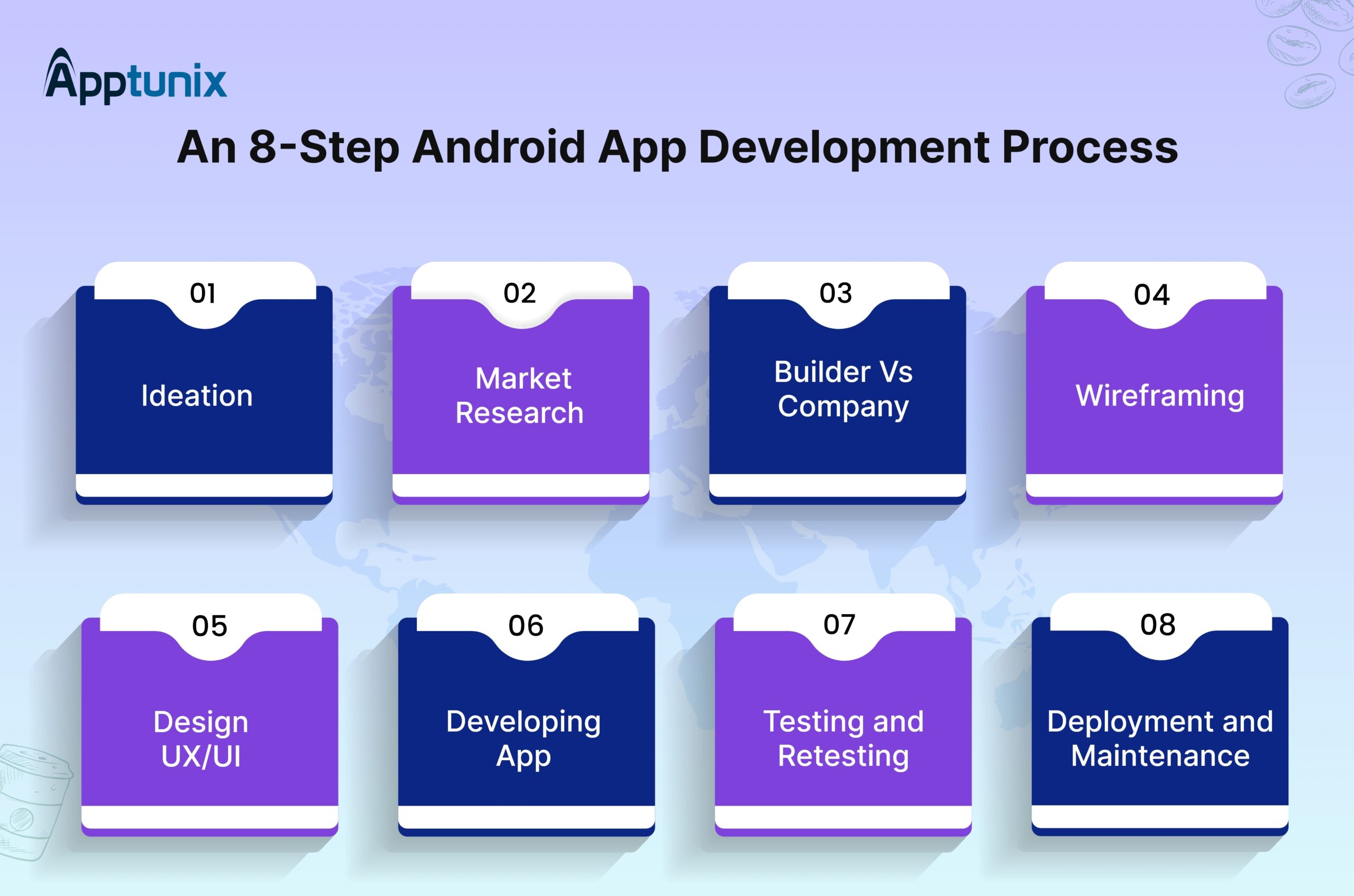
The process of building an Android app entails a series of essential steps, from ideation to development and testing, culminating in the app’s release on the Android platform. Let’s explore each one by one.
Step 1: Ideation
The ideation phase is the inception of every successful app startup, where a compelling idea takes shape. Understanding the challenges and identifying the specific problem the app aims to solve is a vital stage. This clarity defines the app’s purpose and ensures that it provides real value to its target audience.
In addition to problem-solving, setting clear expectations and defining the scope of the app make the vision clear. This involves outlining the app’s features, functionalities, and target platforms like Android. Understanding the target audience and conducting market research helps to align the app’s offerings with user preferences and demands.
Throughout the cerebration of the idea, maintaining flexibility and being open to feedback and iterations improvises outcomes. A successful app startup continuously refines and adapts the idea based on user insights and market dynamics to create an app that resonates with users and meets their needs effectively.
Step 2: Market Research
Market research is a mandatory step in app development, requiring a thorough analysis of competitors, Identifying direct and indirect competitors helps to understand the app’s competitive landscape. Evaluating their strengths, weaknesses, and market positioning sheds light on potential opportunities and challenges.
At the same time, the app’s unique selling point (USP) is a key differentiator that sets your app apart from competitors. The USP should resonate with the target audience and address a specific problem or need effectively, giving users a compelling reason to choose the app over alternatives.
The below table highlights the unique selling points (USPs) of Zomato, Uber Eats, and Swiggy:
Each of these food delivery apps offers distinctive features, catering to various customer preferences and providing a competitive edge in the market.
Ultimately, market research empowers app startups to make informed decisions, optimize their offerings, and build a strong foundation for success in a competitive app market. Regular monitoring of competitors’ actions and staying abreast of market dynamics enables continual improvement and helps the app stay relevant and appealing to users.
Step 3:
Choosing between App Builder and Company
When deciding between an app builder and an app development company, both options offer unique services. An app builder can be a cost-effective and time-efficient choice, especially for simple apps. However, app builders may have limitations in customization and scalability, restricting the app’s potential for complex features and advanced functionality.
On the other hand, opting for an App Development Company provides the expertise of professional developers who can craft fully customized and feature-rich applications. Though the cost may be higher compared to an app builder due to the benefits of a tailored, robust, and scalable app, along with professional guidance, which makes everything worthwhile in the end. Make the choice favorable for ambitious projects seeking excellence.
Step 4:
Wireframing for an Android App
Enabling visual representation of the app’s layout and functionality by applying the latest technology for Android app development makes you stand ahead in the line. An online wireframe can be created using various tools like Mockflow, Adobe Suite, and Balsamiq, providing a collaborative platform for stakeholders to review and provide feedback in real time. On the contrary, an offline wireframe can be hand-drawn by a business analyst, translating the app’s business requirements into a visual blueprint.
This process aids in refining the app’s user interface, navigation, and interactions, ensuring a clear and intuitive user experience. The wireframe serves as a foundation with the help of the development team, guiding you in building an app that aligns with the business goals and user expectations.
Step 5:
Design UX/UI
A well-designed UX/UI makes the app more compelling by increasing user engagement, retention, and satisfaction. Employing a development company is essential as it provides expertise in creating a seamless and consistent design that aligns with the app’s purpose and target audience.
Designing UX/UI for an Android app involves crafting a visually appealing and user-friendly interface to enhance the overall user experience. It includes creating intuitive navigation, eye-catching visuals, and interactive elements.
To cite an example, Spotify employs a sleek and intuitive UI, easy playlist creation, and personalized recommendations, offering users an enjoyable and engaging music streaming experience.
Step 6:
Developing Android App
Once you have the design and wireframe ready, the next step gives birth to your app. Developing an Android app involves a series of crucial decisions that shape its success. Hiring an expert is essential to navigate these choices efficiently. Experts aid in selecting the right programming language, such as Java, Kotlin, or C#, based on project requirements and team expertise. Additionally, they assist in determining whether to opt for a cross-platform framework like Flutter or React Native or stick to native development for optimal performance. This strategic guidance ensures that the app is built with the most suitable tools, resulting in a high-quality, user-friendly, and successful application.
Step 7:
Testing and Retesting
Testing and retesting are critical phases of Android app development, where experts thoroughly assess the app’s functionality and performance across diverse platforms, network conditions, and screen dimensions.
Testing tools like Appium, Espresso, and XCTest help automate tests, identify bugs, and improve the app’s stability. Testing on different devices and network scenarios helps uncover potential issues, leading to bug fixing and iterative improvements. An experienced expert understands the significance of thorough testing, ensuring the app meets high-quality standards and delivers a seamless experience to users across diverse environments.
Step 8:
Deployment and Maintenance
Deployment is the final stage in the app development process, as it involves releasing the app to play stores and making it available to users. A successful deployment ensures that the app reaches the target audience, maximizing its potential reach and impact. Careful deployment planning includes app store optimization, marketing strategies, and handling user feedback for continuous improvement.
Also, regular maintenance keeps the app updated, secure, and compatible with the latest operating system versions and devices. It also allows for bug fixes, performance enhancements, and the addition of new features to meet evolving user needs, ensuring the app remains competitive and user-friendly in the long run. On average, maintenance costs can range from 15% to 20% of the initial app development cost per year.
Make sure that you hire an expert for the above-mentioned steps for detailed insight and desired outcomes. Hire android app developers can enhance the probability of the app’s success.

Closing Remark
Now that you profoundly understand the requirements for building a successful and profitable application. It’s important to take action at the right time.
Turning your app idea into a successful and profitable venture is no small job. That’s where Apptunix, a mobile app development company comes in! We understand that ROI is a crucial aspect of app development, and we’re here to guide you on the right path. So, If you have an app idea and wish to transform it into a money-making reality but are unsure where to begin, Apptunix is your ideal partner.
With a proven track record in Android app development company and a team of skilled professionals, Apptunix offers a comprehensive range of services associated with mobile app development services to guide you through every step of the process.
We know how overwhelming it can be to start from scratch, but fear not! We’ve got you covered every stair of the way. From ideation and planning to development, testing, and deployment, we’ve got the tools and skills to bring your app to life.
Frequently Asked Questions(FAQs)
Q 1.How much does it cost to build an Android App?
The cost of building an Android app can vary significantly based on factors such as complexity, features, design, and the expertise of the development team. Simple apps with basic functionality may cost a minimum of $20,000 to $35,000, while more complex and feature-rich apps can range from $40,000 to $1,00,000. To get an accurate estimate, it’s best to discuss your app requirements with a professional and receive a customized quote.
Q 2.What are the latest technologies for app development required?
The latest technologies for Android app development include frameworks like Flutter and React Native for cross-platform development, Kotlin as a modern programming language, and libraries and tools for AI/ML integration, cloud services, and enhanced security. Staying updated on the latest trends and technologies is crucial to building innovative and competitive apps.
Q 3.Should I choose an app builder or an app development company?
The choice between an app builder and an app development company depends on your app’s complexity and your expertise in app development. App builders are suitable for simple apps with limited functionality and minimal customization. However, for more sophisticated and fully-featured apps that require a personalized approach, an app development company is recommended. A professional agency provides expertise, a dedicated team, and a tailored solution, ensuring a high-quality and scalable app that meets your specific needs.
Rate this article!
(5 ratings, average: 4.00 out of 5)
Join 60,000+ Subscribers
Get the weekly updates on the newest brand stories, business models and technology right in your inbox.

Introducing Sameer, a seasoned writer with 6 years of experience in the field of technical content creation. Sameer’s in-depth technical knowledge encompasses a wide range of subjects, from software development and IT solutions to hardware technologies. His expertise extends to content writing within the realm of Amazon seller brands, where he excels in creating detailed and optimized technical content for various platforms. Sameer is a talented professional currently contributing his expertise at Apptunix, where he excels in crafting exceptional B2B content. With a strong foundation in content writing, Sameer’s skills are finely honed to cater to the needs of businesses in the tech industry.

Telemedicine 2.0 - A Comprehensive Guide On What Healthcare Providers Need To Know?
Discover how the latest advancements like Artificial Intelligence in telemedicine are reshaping patient care. This comprehensive resource offers insights into the key trends and innovations driving this shift, providing valuable knowledge for healthcare professionals looking to stay ahead.
Download Now!Take the First Step
Towards Success!
Master app development with a
30-day FREE trial of our premium
solutions.
